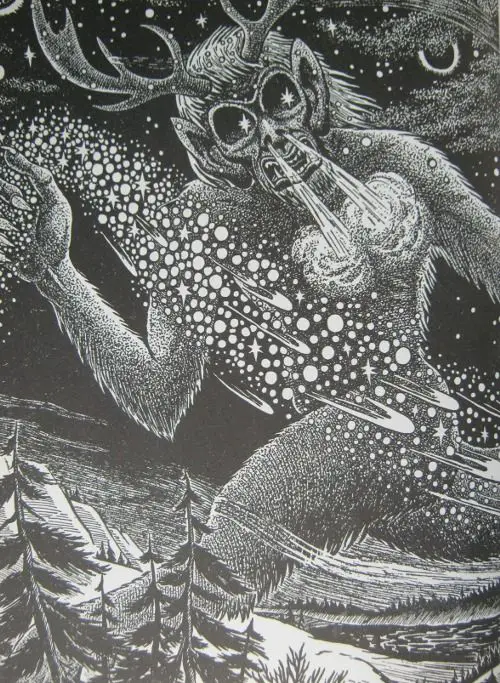Tag: Ojibwa
Jack Fiddler, Wendigo's last hunter
(article by Gian Mario Mollar, originally published on Far west)
His name was Ojibwa Zhauwuno-Geezhigo-Gaubow, "He who stands out against the southern sky", and, in the Cree dialect, Maisaninnine o Mesnawetheno, "Man of Style," but the white men of the Hudson Bay Company nicknamed him Jack Fiddler. Born between 1830 and 1840 in the wild and lush land northwest of Lake Ontario, the son of a respected and feared shaman, he himself became the leader and shaman of the Sandy Lake Sucker tribe. At the time of his childhood, the region was deprived of animals and men, as the Hudson's Bay Company, dedicated to the fur trade, had now abandoned the outpost after years of intensive and indiscriminate hunting that had impoverished the territory. The Sucker tribe was thus forced to move further south, to Big Trout Lake, to trade and the young Zhauwuno-Geezhigo-Gaubow he worked for some time as a boatman, to transport furs to the York Factory.
The secrets of Twin Peaks: the "Evil that comes from the woods"
di Marco Maculotti
«We will meet again in 25 years"—So Laura Palmer promised, trapped in the parallel dimension called" Black Lodge ", to agent Dale Cooper in the last episode of the second season of The secrets of Twin Peaks, which aired in the USA on 10 June 1991. What until recently seemed destined to remain a promise without a sequel is now on the verge of being kept: on 21 May the first episode of the third will be broadcast in America, highly anticipated season of the serial, which will pick up the subject exactly where we left off, with a gap of a quarter of a century. Waiting for the pilot episode of the new season to arrive on our television screens (May 26, on the channel Sky Atlantic) we want to propose to our readers an analysis of the more specifically "esoteric" themes they have made Twin Peaks a real media event of the nineties.
Psychosis in the shamanic vision of the Algonquians: The Windigo
di Marco Maculotti
All the images accompanying this article
(except for the cover)
were generated away Craiyon. com
The aboriginal peoples of Canada, often settled in the reserves bordering the border with the United States, are now divided into tribes that bear different names (Algonquins, Cree, Ojibwa), although they mostly continue to share a very similar vision of man and his relationship with nature and with spirits - and, as it is easy to imagine, the same mythology. In the magical-shamanic universe that founds the vision of these populations - today the last bastion of wisdom that characterized the entire native population of North America for centuries - the spirits with which man can enter into communication are generally called manita - the same word that, with a capital letter, identifies the universal divine Being, the sacred energy that permeates everything.




